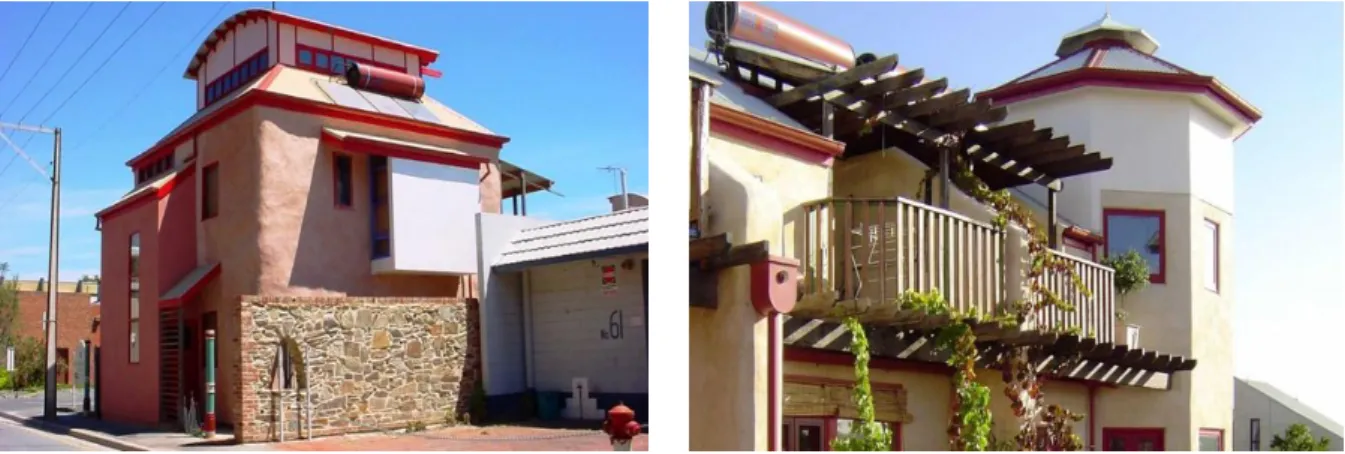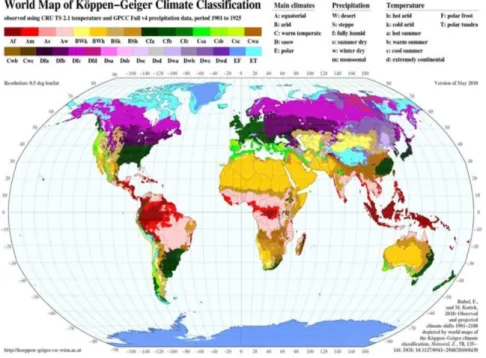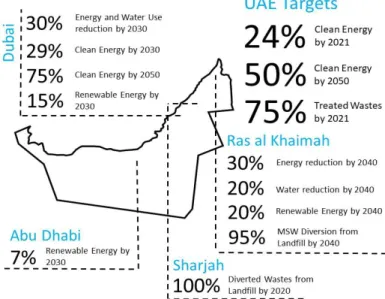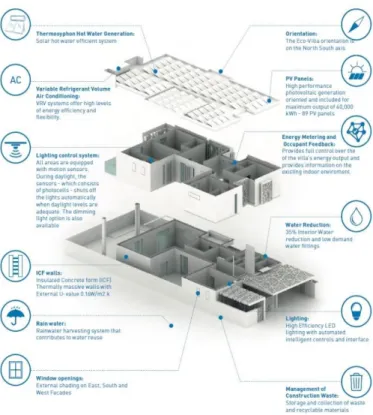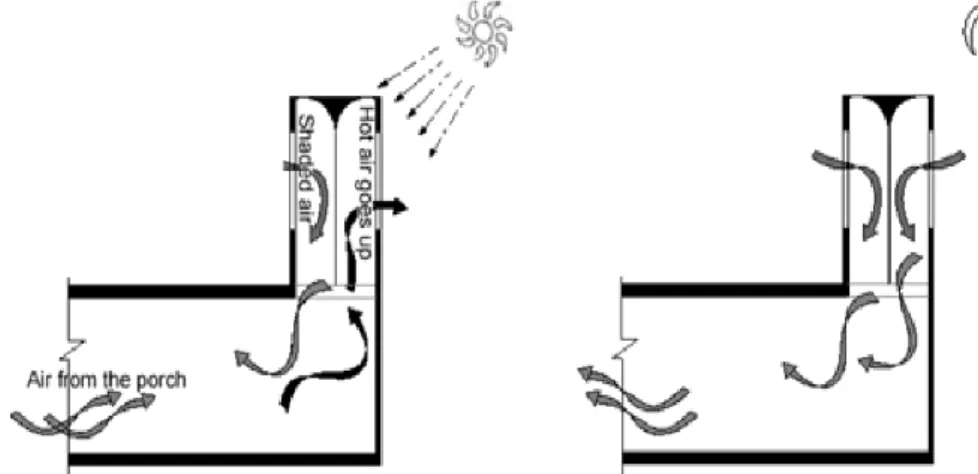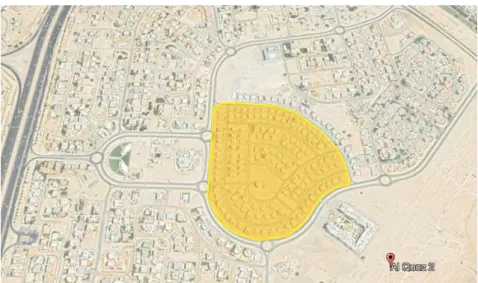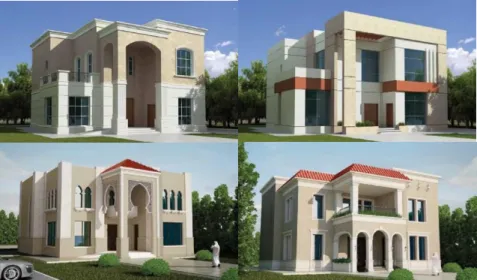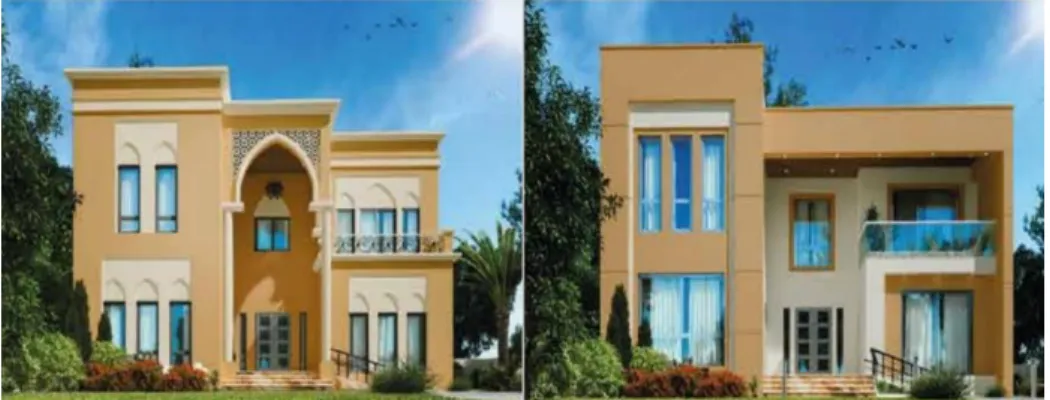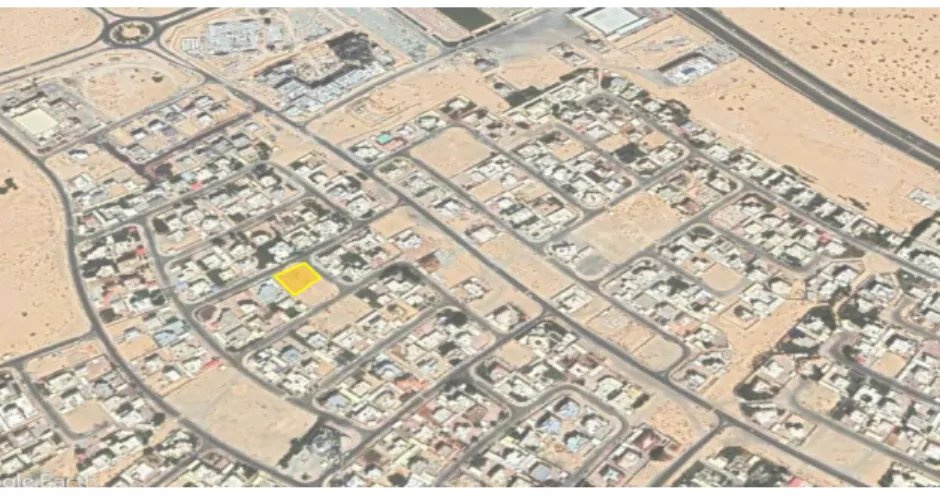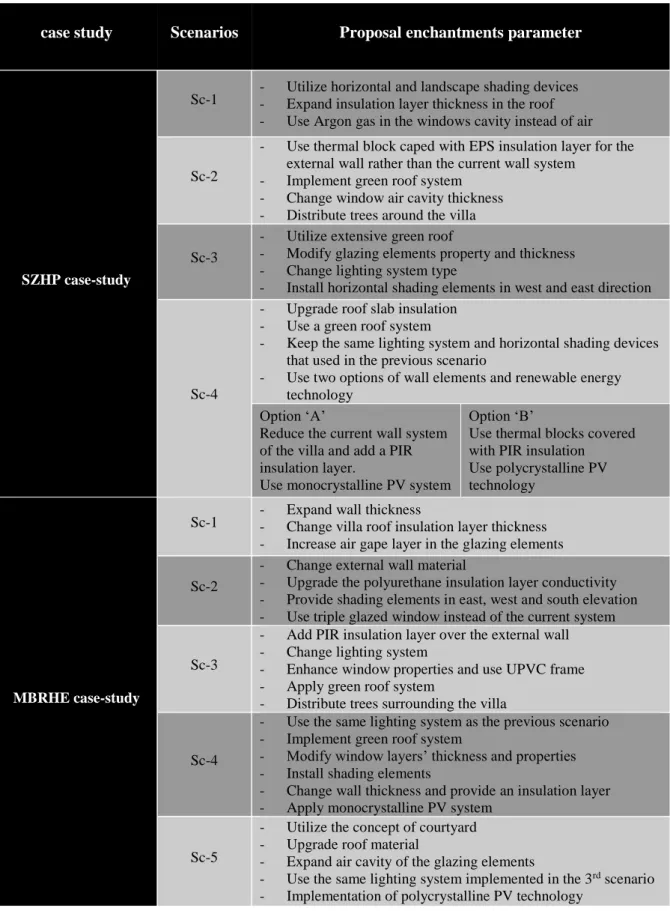Which were later analyzed against life cycle costs to determine the total scope of the developed case study models. The results indicate the possibility of designing and building energy-efficient and affordable housing units in terms of life cycle costs throughout their lifetime.
Introduction
- Overview
- Sustainability and housing sustainability
- Affordable housing
- Sustainable, affordable housing
- Energy efficiency
- Problem Statement and Interest of the research
- Research hypothesis and main question
- Aims and Objectives
- Scope of work
- Research outline
According to Wallbaum et al., (2012), the growth of the world's urban population will dramatically increase the need for housing. The main question is how sustainability can be implemented in the affordable housing unit considering the life cycle cost of housing in the UAE.
Literature Review
Introduction
Sustainable Development
Therefore, the use of natural resources must be controlled to maintain the balance, sustainability of ecosystems and minimize the burden on the environment. Social sustainability focused on the basic rights of human beings, including freedom, equality of opportunity, increased quality of life for.
Sustainable Building Construction
Therefore, increasing the efficiency of construction costs will provide benefits to customers, users and society, which happens by implementing the Life Cycle Cost Analysis (LCCA) method. It is an estimating tool that can predict the cost of a building by calculating the initial cost, operating, maintenance and replacement costs over the life of the building.
Sustainable Housing
Housing sector
- Housing problem
Insufficient building land is more likely due to misguided policies and regulations due to actual physical constraints on land supply. The limitations of converting land from rural to urban uses tend to lead to a shortage of affordable land, resulting in rising housing and land costs.
Affordable Housing
- Affordable housing development factors
Furthermore, in the 2016 report, UN-Habitat explained that expenses do not exceed more than 30% of household income, which guarantees that a household has enough income for non-housing expenses. The construction cost includes the acquisition of the land, such as purchase costs and land registration duties, obtaining planning approval.
Sustainable Affordable housing
- Awareness
- Sustainable, affordable housing benefits
- Sustainable, affordable housing criteria success factors (CSFs)
- Sustainable, affordable housing examples
Status benefits, implementation of sustainability aspects of the housing project will increase attractiveness and liveability factors. The concrete used in flat slabs and mass walls consists of the maximum permissible percentage of fly ash.
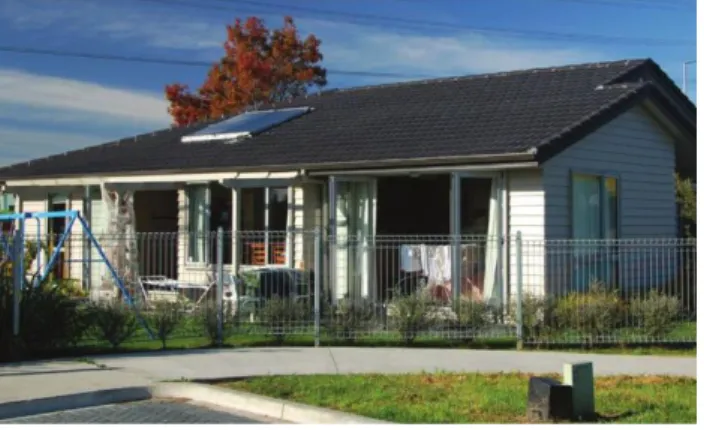
UAE overview
- Geographical and Climate Data
- UAE Climate Change
- UAE energy consumption
- UAE Sustainability
- UAE Residential Sector
- UAE Affordable housing initiative
According to Government.ae (2019), the United Arab Emirates is categorized as having one of the highest levels of vulnerability to the potential impact of climate change in the world. Energy plays an important role in the economy of the United Arab Emirates and in determining its domestic and foreign policies.
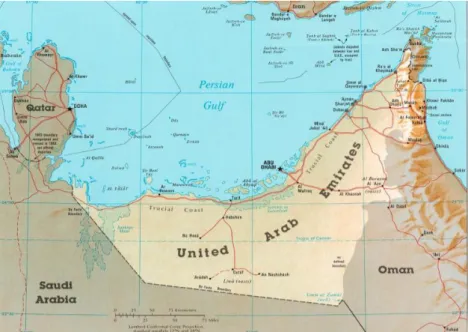
Energy efficiency
So, many countries have started to reduce this rate by implementing energy-saving design strategies and regulations to improve the energy efficiency of the building. The design of the house consists of various techniques to improve the energy efficiency of the building is one of the main targets to achieve a sustainable house (Roufechaei, Abu Bakar and Tabassi, 2013).
Passive design strategies
- Building orientation
- Building material
- Window
- Reflective materials
- Shading
- Courtyard
- Ventilation
- Green roof
So, when the radiation reaches the building surface, the temperature of the surface will increase. Using a proper reflective layer can reflect some of the solar radiation and improve the building efficiency (Lavafpour and Surat, 2011).
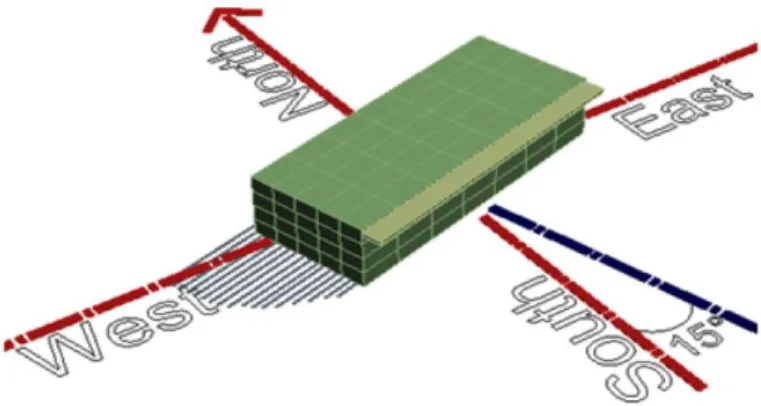
Renewable Energy
- PV panel
It is more preferred by customers due to light weight, low cost, less maintenance and soil layers are shallow (Shishegar, 2012). As previously mentioned, the climate of the United Arab Emirates is hot and dry and is located in the sun belt area between 40°N and 40°S.
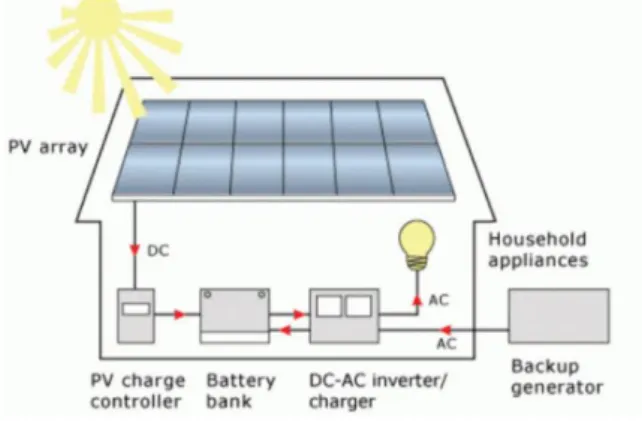
Summary
Methodology
- Introduction
- Similar topics methodologies
- The literature reviews methodology
- Survey methodology
- Simulation and computer modeling methodology
- Mixed methodology
- Methodology selection and software selection
- Methodology justification
- Software validation
- Research methodology
- Methodology limitation
- Methodological diagram
- Research cases-study
- Case study justification and selection criteria
- Overview of Dubai City
- Overview of SZHP case-study
- Overview of MBRHE case-study
- Overview for the proposed developed models
Starting with definitions of key research terms such as affordable housing, sustainable housing and the linkages between them. A literature review provides a deep and comprehensive knowledge and background in terms of the research field.
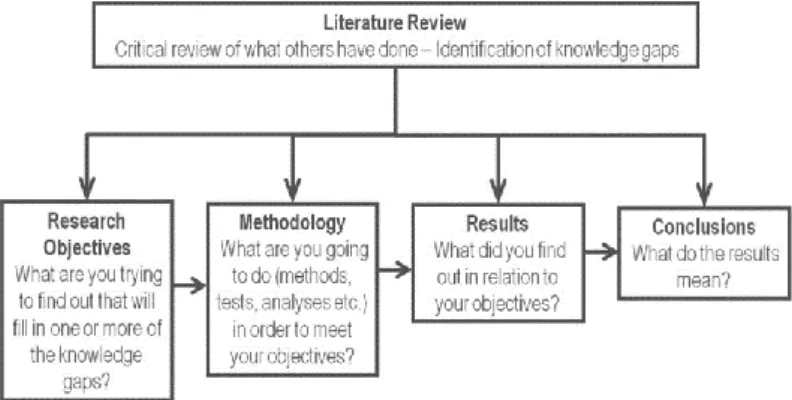
Model Set-Up
Introduction
Dubai climatic condition
As shown in Fig (4.1), the wind in Dubai flows from different directions with a small variation in wind speed. The amount of solar radiation available at each location depends on latitude and hours of sunlight.
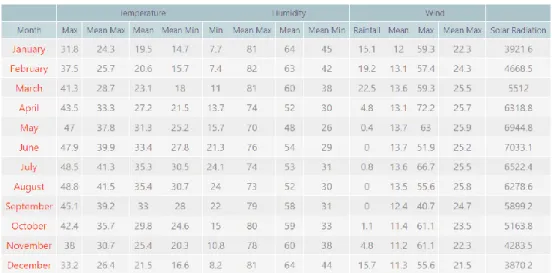
A close look at SZHP case-study
- SZHP surrounding
- Vegetation and landscape
- Construction material
- Main electrical appliance in SZHP
The selected villa design option is Mediterranean, which consists of two floors. The system consists of the outdoor unit (condenser coil, compressor and fan) located on the roof, the suspended unit on the ceiling (evaporation coil, filter and fan) and the remote control mounted on the wall.
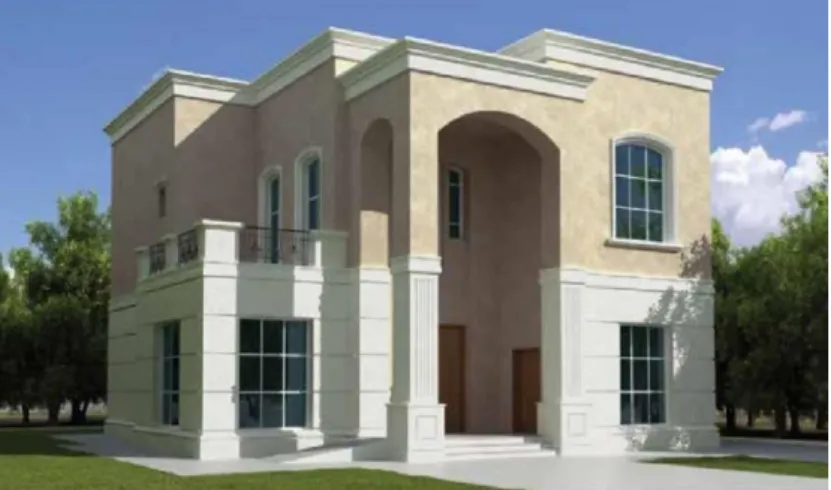
The validation of the first case study
- Set-up the model in the software
- Validity of the simulation model
- The 1st scenario
- The 2nd scenario
- The third scenario
- The fourth scenario
The rest of the year, as mentioned earlier, the villa will depend on the mechanical cooling system. The exterior lighting of the villa has also been taken into account in the analysis of the base scenario.
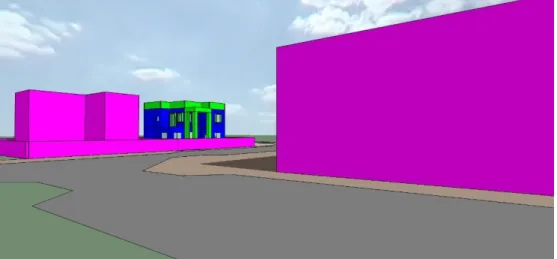
A close look at MBRHE case-study
- MBRHE villa surrounding
- Vegetation and landscape
- Construction material
- Main electrical appliance in MBRHE
The same configuration and process will be created for the MBRHE case study in the next section. LED lamps can reduce electricity consumption by 20% of the villa produced by a lighting system.
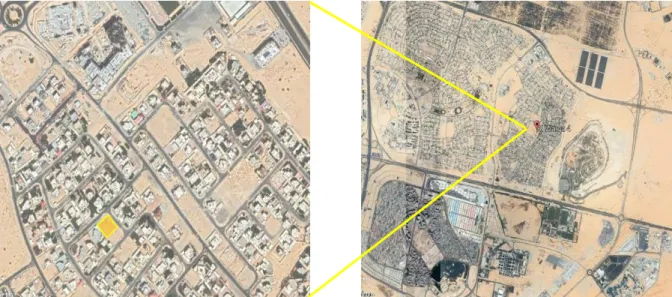
The validation of the second case study
- Set-up the model in the software
- Validity of the simulation model
- The 1st scenario
- The 2nd scenario
- The third scenario
- The fourth scenario
- The fifth scenario
Changing the thickness of the combined roof insulation material (polyurethane foam) to be like the SZHP combined roof system (base case) as shown in Table 4.20. The exterior window layers were changed as shown in the table below in place of the villa's current glazing system.

Life Cycle Cost Analysis
Introduction
Definitions
Furthermore, the process, benefits, applications and case studies of life cycle costing and its analysis will be briefly discussed.
Life cycle cost (LCC) concept of work
In the future, operating and maintenance costs will be the second category of construction costs, occupying 50% to 80% of the project life cycle. It consists of operational costs, labor costs, energy costs, transport costs, spare parts and maintenance costs.
Advantages of LCCA
The third category is demolition costs, which are configured in the final phase of the project. This phase occurs due to the failure of the building after a long time or expensive maintenance; therefore, the cost is associated with the workers who demolish the building (Ahmed, 2016).
LCCA case study
Furthermore, another case study was made on assessing the as-built performance of an existing building in Toronto where LCCA was applied to test the house's modified design to decide if it is worth retrofitting a building to build in. The goal of implementing LCCA in this study is to save costs over the life of the house and support decision makers that investment is profitable based on the payback period and cost reduction (Tokarik and Richman, 2016).
Life cycle cost research methodology and software
Therefore, engineers have developed a maintenance cost estimation method that will calculate it as a percentage of the building's initial cost, which varies with the age of the building. The 5% VAT applies for the next five years from the date of VAT issuance, with its percentage subject to change after five years (Government.ae, 2020).

Life cycle cost analysis
As mentioned earlier, the life cycle cost analysis will be done through Microsoft Excel where the number of tables will be prepared for each case study and scenario. Each table is divided into three groups: the initial cost, maintenance cost and electricity cost, where they are all calculated to find out the LCC.
SZHP case study LCC analysis
The difference improvement cost of the developed sheet equals 1591 AED (upgraded to polyurethane thickness), as shown in Table 5.13. The lighting system's cost in this scenario is similar to the previous one, as presented in Table 5.30.
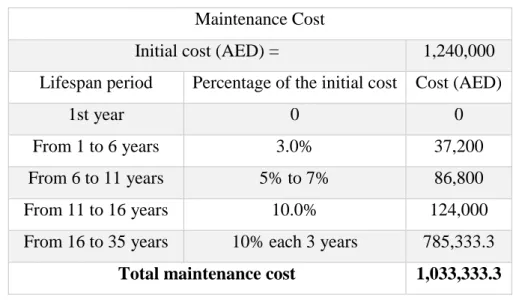
MBRHE case study LCC cost
As the 3rd scenario in the previous case study, the price of CFL is half of the price of LED, therefore the calculation of the new lighting system is shown in Table 5.79. As mentioned in the previous chapter, the implementation of the farm reduces the villa area and thus reduces the initial cost of the current system.
Results and Finding
Introduction
Energy consumption results
While in winter, the energy consumption of the scenario is almost the same as the base case, especially in the months of December, January and February. Figure (6.2) illustrates the energy efficiency results of the 2nd scenario, which also has a smaller variation compared to the base case.
SZHP energy consumption results comparison
Regarding the energy consumption, the ideal scenarios for both options are the 4th scenario. As presented in chapter '4', the developed simulation model involved several improvement renovations focused on the construction materials of the villa.
MBRHE energy consumption results comparison
A polycrystalline PV system was represented in the simulation model, covering 60% of the roof area. 1500 kWh of electricity reduced, followed by the 1st scenario, which slightly improves the energy efficiency of the villa.
LCC analysis results
As shown in the figure, although the electricity consumption cost of the scenario is lower than the base scenario by about 11,500 AED, both the start-up and maintenance costs have increased dramatically by more than 20 thousand, which negatively affects the performance of the scenario in terms of LCC. The renovation methods thus increase the total life cycle costs of the villa during its lifetime.
SZHP LCC analysis results comparison
The decrease in electricity costs more than covers the inflation in start-up and service costs with a balanced amount of AED 29.6 thousand. The figure below represents the life cycle costs of the improvement strategies in the 4th scenario simulation model.
MBRHE LCC analysis results comparison
This minor increase in the initial value is due to a small shrinkage of the total built-up area of the villa, as presented in Chapter Five. After performing a comparative analysis of each case study and its scenarios, some scenarios provide a large improvement in villa performance in terms of LCC, especially the scenarios developed based on the integration of the PV system with another passive design.
Scenarios energy and LCC comparison
- SZHP optimum scenario
- MBRHE optimum scenario
The third model renewal methods provide a moderate improvement where energy consumption and total life cycle cost are minimized compared to the first two simulation models. Also, the 4th scenario identifies an impressive improvement in the energy efficiency and LCC of the case study compared to the other scenarios except the 5th scenario.
Discussion
Despite the initial cost of the building, the implementation of solar technology systems in the residential units contributes to a significant reduction in energy consumption and increases the total life cycle costs. In addition, considering the yard in the design of the housing units increased the energy reduction as presented in the last scenario of the MBRHE case study.
Conclusion
Research recommendation
To build an affordable, energy-efficient home, the author advised starting at the design stage, where designers and specialists identify owners' goals and needs. In addition, it is better to introduce life cycle costing data to convince homeowners that energy efficient homes are affordable.
Future recommendation
Energy-efficient housing saves electricity consumption by building a lifespan and generating energy; at some point, the owners can also earn profits from the electricity production. In conclusion, the study answered the main research question and achieved the main aim and objectives, providing an affordable energy-efficient model for the citizens of the United Arab Emirates.
Renovation of villas for public housing in the United Arab Emirates (UAE): energy and economic impact.
